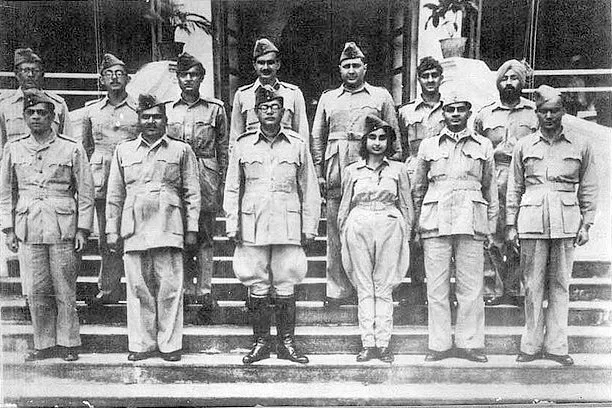It was in the spring of 1943 that the man loved by millions of Bharatiya embarked upon a historic journey to fight head-to-head with the colonial powers who had chained his motherland for more or less 200 odd years.
Fueled by his aspirations to put up a brave fight against the then oppressors of Bharat, Netaji Subhash Chandra Bose landed in Sabang of Sumatra (Indonesia) a territory, then controlled by the imperial Japanese rule in May 1943.
Netaji became the head of the Indian Independence League on July 4 and subsequently re-established the Indian National Army (INA) more famously known as the Azad Hind Fauz.
At a rally addressed at Padang on July 9, Netaji delivered a historic speech emphasising that he needed money, manpower and other resources to take on the enemies. He asserted that half-hearted measures would not do and he expected at least three hundred thousand soldiers and around 30 million dollars to achieve the dream cherished by millions of Bharatiya.
In days to follow, Netaji founded the first ever all-women military unit to be known as Rani Jhansi regiment and took the command of the INA as the commander-in-chief.
Come October 21, 1943, the Azad Hind Government was formed in the far-fledged land of Singapore with Netaji as its head. The newly formed government was then recognised by 11 countries including a few powerful ones of that time.
What follows in years to come was a saga of sacrifices made by thousands of unsung heroes who were happily willing to make the supreme sacrifice for their beloved motherland, waiting to be free from the clutches of her oppressors.
It was on December 30 of the same year that a Bharatiya flag unfurled in Andaman and Nicobar Island which was transferred by the Japanese to the provisional Azad Hind government. The army crossed the Indian territories for the first time in March 1944 and subsequently raised the flag of the provisional government at Moirang, a town of Manipur on April 14, 1944.
Months later, despite all the odds Netaji Bose gave a clarion call of “You give me blood and I will give you freedom” (Tum Mujhe Khoon Do Mai Tumhe Ajaadi Dunga) on July 4, 1944 in Burma.
The consistent gains of the ‘allies’ powers’ in the WW2 forced the Japanese military to retreat to Burma in July, though the INA remained steadfast with its goal and staged a resilient display amidst unbearable difficulties caused by monsoon and scarcity of supplies.
The INA retreated to Bangkok while abandoning Rangoon in April 1945, but not before denting an irrecoverable damage by shaking the very foundation of the colonial powers, eventually leading to their departure from Bharat in the next two years.
The British hold the famous ‘red fort trials’ featuring officers of the INA on charges of waging war against the empire between November 1945 to May 1946, drawing demonstration across the country and anger in the British Indian Army which eventually culminated in form of the Royal Indian Navy mutiny of 1946, a last nail to the coffin of British Raj in Bharat.



















Comments